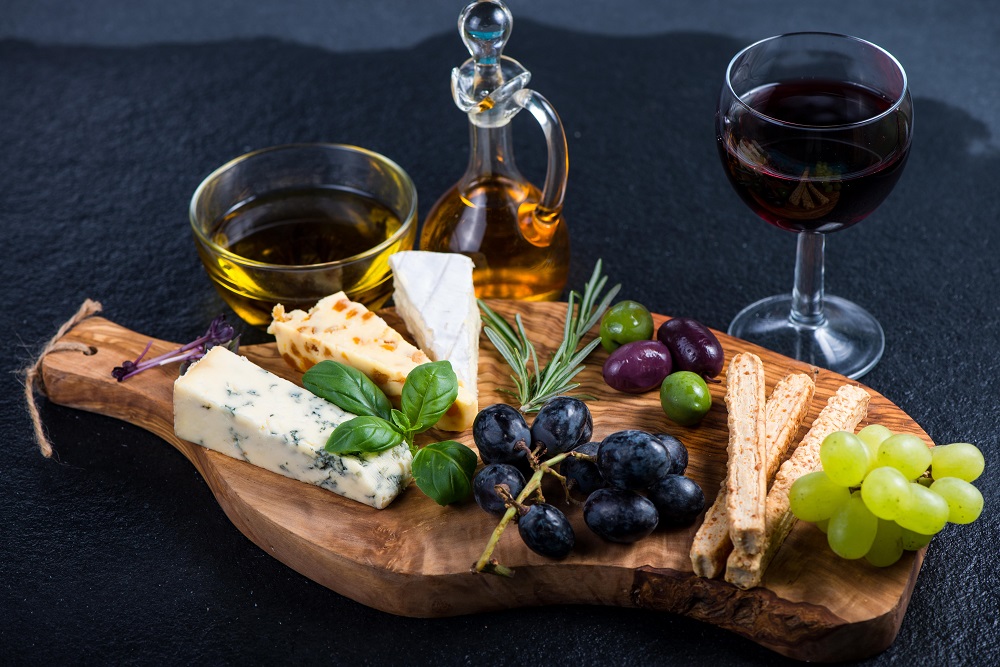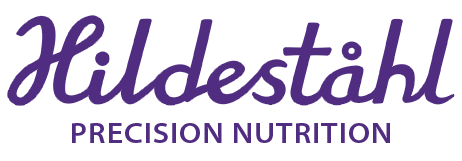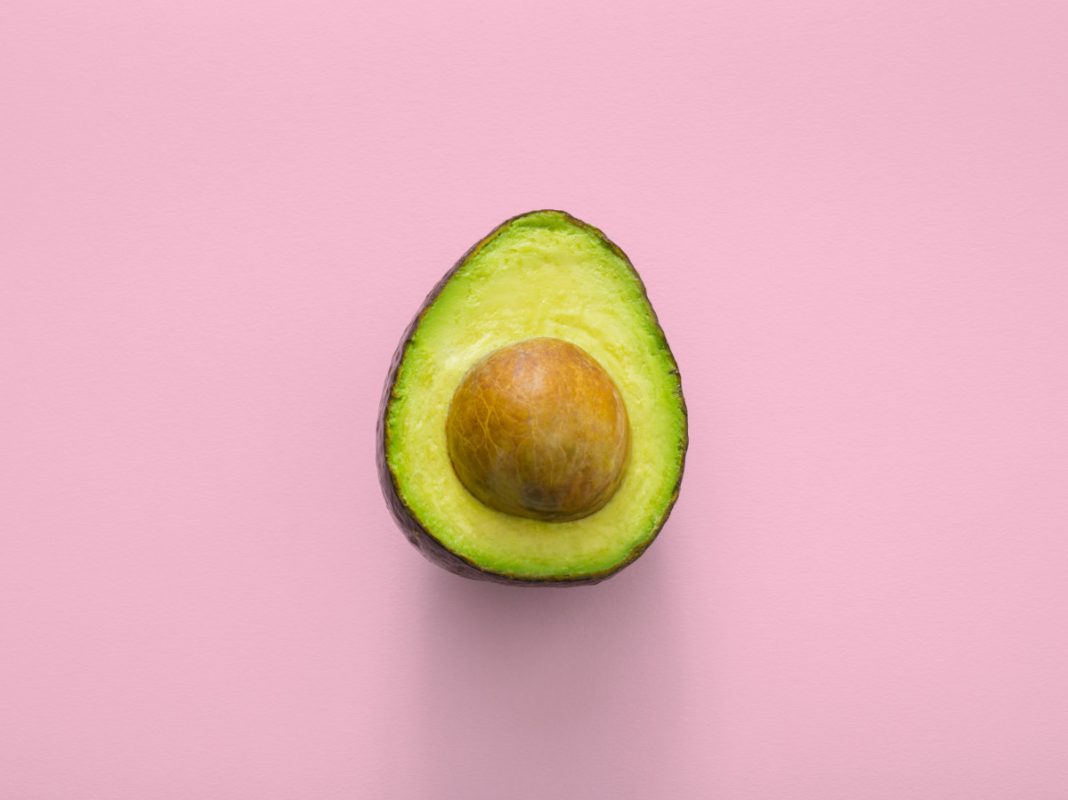No products in the cart.
Nutrition and beauty
We look at how hair and skin are affected by what we eat and how we live.
How should you think about nutrition when you care about your appearance?
The article is originally from a lecture, Nutrition and Beauty, given by Yvette and Jens at Hildeståhl to a group of Norwegian hairdressers, October 2021.

The outside reflects the inside
– Beauty comes from within
Our basic idea is that the outside reflects how you feel on the inside. It’s actually quite logical. And it’s not really possible to live unhealthily but still try to look beautiful, by cheating by only following certain “nutritional advice”. Or creams or operations. Everything is connected. It’s a broad area, but for those of you who care about both your health and your appearance, let’s look a little deeper into this!
We thought we’d try to dive a little deeper than most online articles on ‘how to eat to look good’. So sit back, take some time, maybe with something good in a cup.
In with nutrition, out with waste
– The skin is also a detoxification organ
The liver is one of our major cleansing organs. And so is the gut. It’s important that the stomach and intestines work well. When the liver, stomach and intestines are not working properly, it will show in the skin, which also acts as a detoxification organ!
You can see very clearly in the skin, on the face, back, chest and shoulders for example, how a person feels inside, what they eat and how they live. To optimize our appearance, we need to ensure that we get the right nutrition, but also that we can get out the “waste products” that are used up and the waste that should be removed.
It takes place at several levels in the body, from the intestinal tract to every cell, transporting nutrients and waste through the extremely thin cell wall. This exchange of nutrients and removal of waste products is one of the cornerstones of feeling and looking good.
Stomach and intestinal system
– It is important that the stomach is well looked after
– Nutrient absorption
– Good bacteria, dysbiosis
Can we absorb the nutrients we eat? Nutrients are absorbed in the intestinal tract. Not going to the toilet at least once a day, preferably twice a day, means you are potentially in trouble. We want ‘good flow’ through the system.
Did you know that we have at least 2 kilos of bacteria in our intestinal tract? These bacteria are vital for us. They help break down food, they produce nutrients for us, like vitamin B12. We live in symbiosis with them – we feed them, they feed us. But there are good bacteria and bad bacteria. If you have an overgrowth of bad bacteria, which don’t provide anything, don’t live in symbiosis with us, and maybe even release toxins, that’s called dysbiosis. Antibiotics, stress and chemicals in everyday life are hard on our good stomach bacteria. The result is a stressed stomach, poor nutrient absorption, IBS, bloating, and even lowered immunity and allergies. Dysbiosis can also be caused by feeding the wrong bacteria, for example by eating too much sugar. Fungus (Candida) is also dysbiosis, when it has taken over.
We like probiotics. They are supplements with live stomach bacteria. If you’ve been on a course of antibiotics, or under extra stress, or notice that your stomach isn’t working optimally, buy a good probiotic. We recommend a variety with a number of strains. We particularly like the liquid and live varieties, such as Orgo-Germanika and Probioform.
Of course, there are also probiotic products in supermarkets that are heavily advertised. They can be complementary, but we don’t think they have anywhere near the same effect as a pure probiotic.
Pickled vegetables are also great for your stomach. Traditionally, it was used in many cultures around the world. But it’s a bit forgotten today. Pickled vegetables here in Scandinavia, sauerkraut in Germany, Kimchi in Korea. Feel free to start using these too, it is also quite easy to make yourself. Kombucha, the fermented tea, is also a probiotic food.

stress
– Replenishing “stress substances”
– B-complex, magnesium, minerals
It’s a very common problem, especially for women! We hear it daily from hairdressers. It can be a woman who has suddenly started losing her hair. Then it is not uncommon that it turns out that she had an extremely stressful period 5-6 months earlier, for example at work or some kind of personal, emotional stress.
In a period of stress, the body de-prioritizes hair and skin, to focus on survival. Nutrition and energy are used where they are most urgently needed, in the short term, for us to survive. It can take a while before it shows up on the hair, the result of stressing and, so to speak, depleting the body’s resources of, for example, magnesium and various B vitamins. Then it is important to nourish the body again, to let it recover.
It is common that when you are stressed, you also eat less, when you should really put extra effort into your nutrition, it is instead the opposite. In addition, the stomach and intestines do not feel well from stress, so nutrient absorption is impaired.
Stress, whether emotional or physical, increases the production of cortisol, known as the stress hormone. Elevated cortisol levels disrupt the hair growth cycle. It also causes us to lose nutrients at a higher rate – we excrete extra electrolytes, minerals like magnesium and potassium.
B-complex is consumed at a higher rate when we are stressed. In the health food industry, B-complex is known as the ‘anti-stress vitamins’. It is a group of vitamins that are involved in many processes in the body. Especially in the liver, where B6, B212 and folic acid are needed in the detoxification system. B vitamins are also needed for the nervous and hormonal systems. All B vitamins work together, so it is important to have the whole complex in one supplement.
Vitamin B5 (pantothenic acid) has been shown to have a good effect on acne and to help heal acne scars. Biotin is important for preventing hair loss and gray hair. Biotin can also have a healing effect on the lining of the intestine, which can help prevent leaky gut, i.e. an intestinal wall that leaks substances into the blood that should have gone down the drain.
Our product Hairforce is formulated to compensate and balance for typical such deficiencies. You could say that Hairforce is a kind of “stress multi-vitamin”, with a complete B-vitamin complex, magnesium, zinc and more.
Stressing less is of course the solution, but as we all know, this is easier said than done. Short-term stress is not as bad as long-term stress. There are also different kinds of stress, yes it’s an interesting topic in itself, which we don’t have time to go into here, but the worst stress is when you “feel hunted”, that you can’t cope with the situation, almost drowning in problems. Stress that feels like a challenge, trials that are difficult, but that we still feel “up for”, that kind of stress has even been shown to be positive.
Read more about stress and hair loss here.
Lower nutritional values in food today
Our food today often does not contain as much nutrition as it did, say, 50 years ago. Today, a recommended daily intake of magnesium is 400 mg. But some researchers say we need more like 1000 mg/day. A hundred years ago, it was said that we got 1100 mg of magnesium/day through diet alone. Our arable soils simply have lower mineral content, due to industrial farming. It is therefore likely that we have an average magnesium deficit of perhaps 300 mg/day. Magnesium is the major heart and muscle mineral. This is why leg cramps and angina are so common. Many people therefore need magnesium supplements. It is also an important mineral for hair.
Our food is our main source of nutrition, despite agricultural practices that have depleted the soil and bred fast-growing crops. We think it’s very important to choose food carefully. Because the nutritional value of food can vary greatly! More on that later.
Fungi and candida
We all have fungus in our bodies, it’s natural. The problem is when it gets too much. Candida overgrowth often causes symptoms such as itchy skin or dry patches.
Food is important to have a good balance of good bacteria and not get fungal overgrowth. Candida likes sugar, so avoid too much sugar. Candida problems are more common in women, thought to be due to hormones and the influence of estrogen.
MSM, organic sulphur, is good at combating candida and fungal overgrowth.
Minerals and ‘building blocks’ for hair and skin
We need raw materials for hair, skin and nails in large quantities every day. Actually, not just hair and skin, but also vascular walls, cartilage, tendons and the lens of the eye.
MSM – needed for joints, muscles, cell walls and skin. It is organic sulphur, which is naturally present in our food, in meat and crops among others. MSM is also needed in the liver, cell membranes and in large quantities in the gastrointestinal system. Unfortunately, the levels have dropped in our food. MSM has the ability to “soften” cell walls, so that cells can get rid of waste much more easily. It also allows cells to absorb nutrients more easily. So it has a detoxifying effect on the whole body and especially on the liver.
MSM can reduce hair loss, thicken hair and actually in some cases reduce gray hair, even restore hair color.
Silicon – together with MSM, is an important part of our connective tissue, therefore in hair, skin and nails.
It is a trace element that is very important for creating firmness in tissues and giving strength and elasticity to the skin. A lack of silicon in the skin makes it less elastic. Silicon is found in vegetables, including asparagus, which is extremely rich in silicon.
Iodine – in Sweden, some areas are quite iodine-poor. Deficiency is common. In Norway, pregnant women are often advised to take extra iodine. In Sweden, it’s rather the opposite, people are a bit afraid of iodine. But then Sweden tops the list of countries where people take Levaxin and thyroid medication. Thyroid dysfunction is common, leading to fatigue, weight gain and hair loss.
In Japan, where seaweed and shellfish are widely eaten, iodine deficiency is uncommon, and perhaps therefore there are fewer cases of thyroid problems. Iodized salt is not a good source of iodine. Real sea salt can be. Iodine can otherwise be taken in supplement form as Lugol’s drops, or if you want it in a lower dose from a natural source, from kelp algae as capsules.
Our dietary supplement Hairforce is rich in MSM, silicon, iodine, zinc and other minerals.
Microcirculation
Hair, skin and nails depend on nutrients and oxygen reaching the hair follicles at the top of the scalp and the skin cells. The circulation has to fight gravity up there and the vessels are extremely fine. So blood circulation is very important for the hair. Feel free to do a scalp massage. It’s easy to do yourself.
The second circulatory system is the lymphatic system, which is an intricate network tasked with clearing out waste, debris, fluids and harmful substances from our bodies. It is closely linked to the immune system. The lymphatic system is not a newly discovered system as you might think. Even the ancient Greek Hippocrates, known as the father of medicine, knew about lymphatic fluid, which he called ‘white blood’.
Lymphatic fluid traps waste products, bacteria, viruses, toxins and dead cells. It also transports proteins and hormones. Lymphatic vessels also absorb fats and fat-soluble vitamins from our digestive system, and the lymphatic system carries these nutrients to the cells of the body.
Read more about the lymphatic system here: https://www.lymfsystemet.se/om-lymfsystemet
Lymphatic massage is also very effective. It can be done by a lymphatic massage therapist, but you can do simple lymphatic massage yourself. Moving around also boosts lymph and blood circulation.
Most people today have sedentary jobs. We can’t do anything about that. But get moving once in a while. A workout has a very strong effect on circulation. I read somewhere that a hard workout activates capillaries, i.e. very fine blood vessels, whose combined length would reach a couple of laps around the earth.
Hormone balance
Stress and nutritional deficiencies affect the hormonal system. Yes, we are ignoring natural changes like menopause. Read more about stress in our article on stress.
There are many things in our environment that disrupt the thyroid gland, especially fabrics, paints, furniture and electronics. These contain brominated flame retardants. So if you have a lot of these around you, you may have extra needs for nutrients, especially iodine.
The endocrine system also needs a well-functioning liver to get rid of hormones that have done their job.
We need substances such as B vitamins, selenium, iodine, zinc, magnesium for the hormonal system.
Sizes
You don’t have to be fanatical about food. We don’t want to recommend a particular ‘diet’ to follow. We are all different. Besides, you should be able to live, have a good time, eat well.
Some specific advice that we think makes sense is:
Dairy products. Some people feel good (get better skin) by cutting down on them. But at the same time, we believe that unpasteurized cheese, real butter, and other dairy products, including yogurt and sour cream, can have their place in a ‘beauty diet’. But you may not need to drink a liter of milk a day.
Sugar. Everyone knows that today. It causes inflammation. Feeds candida. Leads to blood sugar problems. Of course you can eat a cookie or something sweet sometimes. But you don’t have to become an extremist. But if you eat sweets every day, it’s not optimal if you care about your appearance (and your health).
Another problem with sugar and fast carbohydrates is protein crosslinking, or glycosylation. This is when proteins and sugars cross-link, making the skin less elastic over the years and more ‘saggy’. Keeping blood sugar stable is one way to reduce it. Some nutrients, such as vitamin B6, help the body to reduce protein crosslinking.
Buy a good sea salt. Many people think that salt is bad. But it is a vital mineral. We have salt in our blood, in our tears, in our whole system. So important is it that nature provided us with special taste buds on the tongue to identify salt. But the chemically produced, industrial salt, it lacks nutrition, it is ‘dead salt’. It contains nothing that adds anything to our cells. A sea salt contains other minerals, chloride, potassium, trace elements and iodine.
Good fats. Mediterranean food is almost the ideal diet. Many studies have shown this. In addition to a lot of spices, they also use a lot of olive oil. A good olive oil, a real olive oil, is worth investing in. Olive oil is rich in special polyphenols. Fats are important for hair, skin and nails. A low-fat diet is a recipe for problem skin and hair loss. We don’t think you need to be afraid of animal fats either. But oily fish is probably the best source. Vegetable oils are considered the least healthy (except for some, like olive oil and coconut oil).
Eat food you like. High quality food. Good raw materials.
Finally, enjoy the food! Food is wonderful. Think positive thoughts about food. Buy quality food – a bit of high quality rather than more of the cheapest. You often get what you pay for. The cheapest chicken fillet comes at the price of steroids, antibiotics and a chicken that has lived a miserable life, along with lower nutritional value. Buy grass-fed meat when you can, it has better fatty acid composition. Buy organic vegetables, preferably from small-scale farming, they have higher nutritional value. If you like cheese, why not treat yourself to an unpasteurized cheese from Switzerland or France? Yes, it will cost twice as much as Arla’s domestic cheese, but taste more and certainly have higher nutritional value.

Our Hairforce Professional food supplement is formulated to compensate for the problems we often encounter, leading to hair loss and skin problems. Find out more about what it contains and how it works here.

